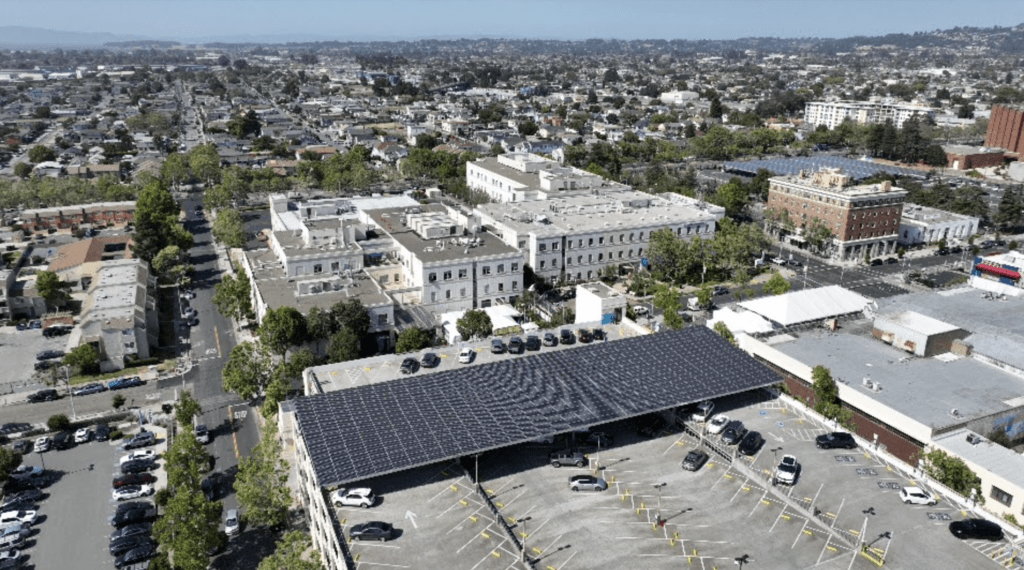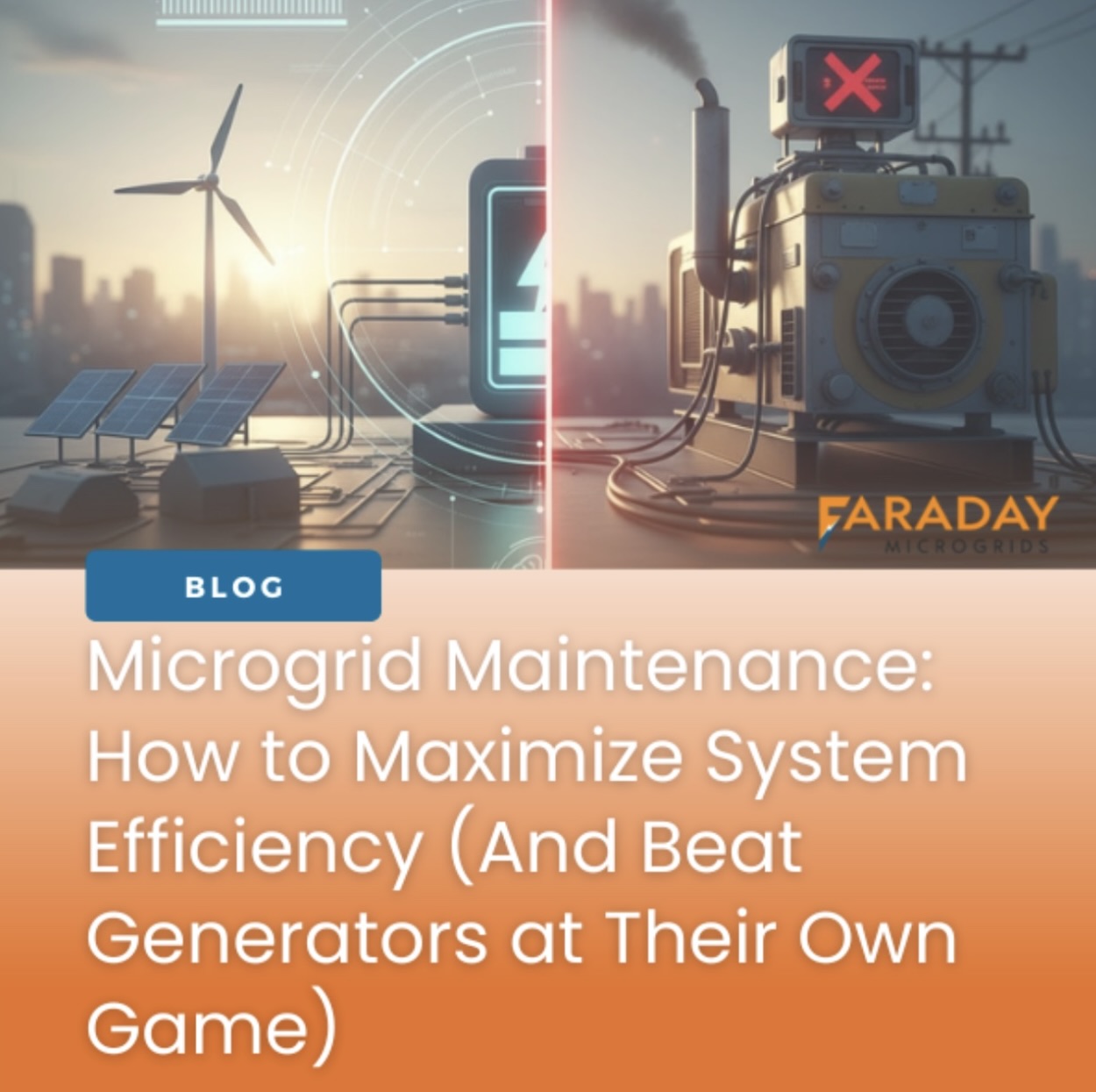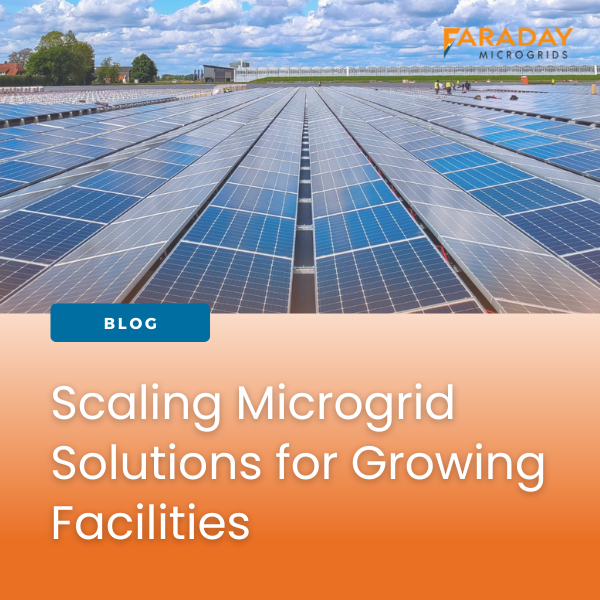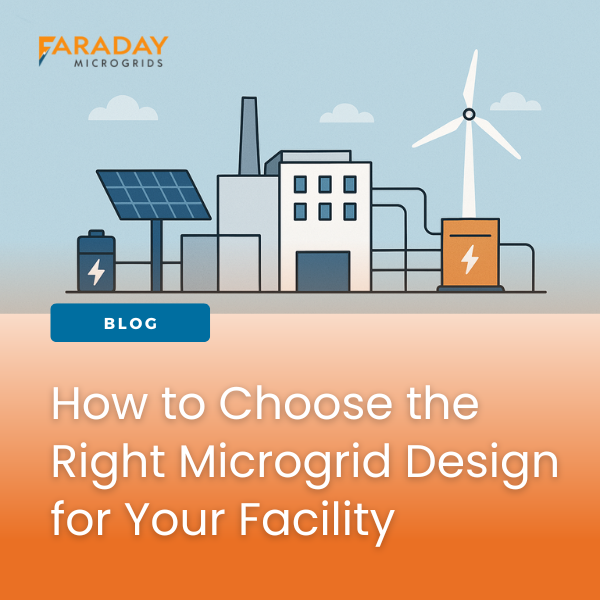Nonprofits face special (and sometimes competing) priorities – serving their primary mission while being mindful of costs, stakeholder expectations, and regulations. Operating expenses can be particularly challenging in the face of tight budgets and inflation. Cutting these costs while preserving performance, converting non-productive spaces and assets to sources of value, and doing so while improving sustainability and growing philanthropy could allow nonprofits to turn even greater resources toward their mission and vision.
Faraday renewable energy microgrids – clean energy generation, battery energy storage, and intelligent, automated controls – are one of the few approaches that can meet all of these imperatives.
Here are five ways a renewable energy microgrid can support your mission, right now.
1. Faraday Microgrids Attract More Donor Dollars

Philanthropy is the lifeblood of many non-profit organizations. When donors can be matched with the right programs or capital projects, great aspirations become achievable objectives. At the same time, however, the competition for donor time and resources is only growing more fierce.
This is where a donor-supported, Renewable Energy Microgrid can make all of the difference.
Not only can a site-based microgrid significantly cut operational cost, hedge against further increases, and decrease the facility’s carbon footprint. In addition, it can bring significant economic benefit to the donor that they cannot realize with any other type of project. Normally, philanthropists may receive a tax deduction and will enjoy the benefits of being associated with an important project. These remain true with renewable energy microgrids, but the donor may actually realize significant added economic benefits.
When a donor funds a Faraday renewable energy microgrid for a nonprofit, the donor may capture tax credits, depreciation, and other revenues that approach or even exceed the original donation cost. This might even allow the donor to give a second time and double their original contribution to the nonprofit!
With specialty guidance from the right team, including the experts at Faraday Microgrids, your nonprofit can garner more donor contributions, cut costs, reduce your carbon footprint, and turn greater resources to what really matters – your mission.
2. Microgrids Can Shift When Solar Energy is Used and Maximize its Value.
Solar energy has become an important way to cut utility costs across the World. This is particularly true in areas where midday power costs are the most expensive. Unfortunately, utilities have now adjusted rates across the United States and reduced midday energy to the lowest cost while making early evening the most expensive – making solar only far less valuable as a way to offset utility energy usage and peak cost.
This is where Faraday Renewable Energy Microgrids can be game-changing. Whether they are applied to an existing solar-only project, or in a new build, comprehensive microgrid, Faraday systems automate the storage of solar energy during the day and its deployment it in the late afternoon/early evening. In so doing, the microgrids harvest the greatest value by offsetting the most expensive utility energy.
Another modern reality is that utilities no longer pay full value for solar energy that is exported to the utility grid. Whereas many older contracts allowed sites to get full retail value for every unit of energy used or sent across their meter, now utilities either will not accept export at all or will pay low, wholesale rates. A Faraday Microgrid eliminates this problem – keeping energy onsite for your usage at full value.
Finally, Faraday Microgrids can help your facility save money through energy arbitrage. Automated controls can direct the purchase and storage of the least expensive utility energy, typically late at night, and its use to offset the most expensive energy during the day or early evening. This “buy low, use instead of high priced” saves your facility the difference is costs.
Find out how Faraday Microgrids can help you maximize the value of your solar and utility energy to cut costs and turn revenue towards your mission.
3. A Special Fee for Commercial Buildings (aka Demand Fees) Can be a Surprising Source of Energy Cost, but Also a Big Opportunity for Cost Reduction.
Commercial buildings not only pay for the cost of energy (kilowatt-hours or kWh), but also pay a second fee for the highest speed at which they draw power from the utility during certain time periods (kilowatts or kW). In essence, the more intensive your power use, the more “penalty” you pay. An illustration of how two buildings that use the same amount of energy might experience very different costs is shown here:
Building A
Usage: 100,000 kWh/mo
Energy Fee: $0.08/kWh
Energy Cost: $8,000/mo
Peak Demand: 500 kW
Demand Fee: $25/kW
Demand Cost: $12,500/mo
Combined Cost: $20,500/mo
Building B
Usage: 100,000 kWh/mo
Energy Fee: $0.08/kWh
Energy Cost: $8,000/mo
Peak Demand: 2000 kW
Demand Fee: $25/kW
Demand Cost: $50,000/mo
Combined Cost: $58,000/mo
Even though the two buildings use the exact same amount of energy, the difference in total cost is nearly triple in the building with a four-fold higher peak demand. Notably, the “peak demand” is determined by the highest single 15-minute power draw during the highest cost time period (typically 4-9pm) during the entire billing period. Only one “spike” triggers this cost!
Faraday renewable energy microgrids take energy that is made during less valuable time periods, such as midday solar, and time-shifts its use to the highest demand cost periods. Not only does this decrease the energy charge, but it simultaneously can buffer the “spikes” in demand and the resulting costs. By automating the storage and redeployment of clean power, Faraday microgrids “shave” costly demand peaks and harvest the best value for your facility. And, as utility prices inevitably increase, your microgrid only becomes more valuable.
Why pay more for energy and peak demand than you have to? Let Faraday Microgrids maximize your utility savings to give back your capital for purposes you really want.
4. Without Back-up Power, a Building Effectively Stops Operating During Outages. A Microgrid can Prevent This.

Faraday microgrids are expertly designed to provide power to facilities even when the utility goes down. In this sense, microgrids play two roles – serving the routine needs for facilities to cut daily operating costs and providing backup power during increasingly frequent natural and human-made events that cause power cuts.
Whether it is due to fire, flood, earthquake, damage to utility systems, or other reasons, any number of events can render facilities inoperable for hours or even days. With Faraday microgrids, they can remain resilient and continue to provide the important services their stakeholders need.
Perhaps most importantly, “islandable” microgrids such as those provided by Faraday Microgrids offer value that simply cannot be achieved with other tools. Unlike fossil fuel generators, microgrids are able to move through regulatory restrictions easily and provide clean energy services. In addition, microgrids produce value on a daily basis while generators often lie fallow – causing expense without savings. Finally, the “fuels” for Faraday renewable energy microgrids are abundant and free (sun, wind) and fossil fuels are expensive and may be unavailable in emergencies.
5. Interconnection of Solar with the Utility is Increasingly Challenging. A Microgrid Makes it Easier.
Energy-generating systems like solar are encountering increasing resistance to being allowed to connect to buildings and the utility grid. Utilities may particularly oppose systems that will export energy to the grid and, in many locations, have the right to delay or even refuse connections altogether. If a facility is located where utility circuits are already “saturated” with renewables, there may be no option for solar only.
In contrast, Faraday microgrids may be approved much faster based upon their ability to reduce or eliminate energy export. As an example, Faraday and its partners were able to obtain an interconnection agreement with Southern California Edison for a very large solar array nested within a microgrid at the Kaiser Permanente Hospital in Ontario, California in under three months!
Making, keeping, and using your own energy with a Faraday microgrid renders your facility’s project more feasible, cost-effective, and valuable and avoids the obstacles that are increasingly encountered by solar-only projects.
Learn more about how Faraday renewable energy microgrids could lead to significant benefits to your institution(s) and programs at https://faradaymicrogrids.com/analyze.






